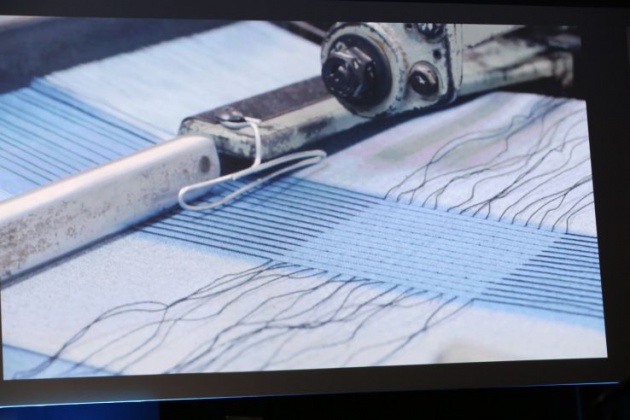
Google’s ATAP unit today debuted Project Jacquard, the group’s effort to develop the technology that could soon make interactive textiles not just a novelty, but something that the global fashion industry could adopt.
According to ATAP’s Ivan Poupyrev, the group asked how it could weave multi-touch textile sensors and how to weave interactive input devices. “We’ve done this before — people have done this; but we want to move beyond novelty,” he said. “We want to move beyond a single use case.”
The first thing the team had to do was create a yarn that could be produced and woven into clothes on an industrial scale.
“We have to think about making interactive textiles at the scale of the global apparel and fashion industry,” he noted. “We can’t expect them to change just for us — even though we are Google. We have to adapt to the fashion industry.”
So the team went out and worked with partners to create a yarn that was conductive but would still resist the stresses of industrial garment manufacturing. So how do you take the textile and connect it to electronics? The team realized that there was no need to weave the whole garment out of the new yarn; instead, they decided that it’s perfectly fine if only a small part of the garment is interactive. Then you can have an area on your arm that you can interact with.
ATAP built a chip that can take the signals from the yarn, which is organized in a set pattern, and interpret the signals from the conductive yarns as people move their fingers over that area.
Google says it is building the whole pipeline to bring this technology to market and to create an ecosystem around it. The team is already working with creatives in the fashion industry. The first partner the company announced today is Levis.










